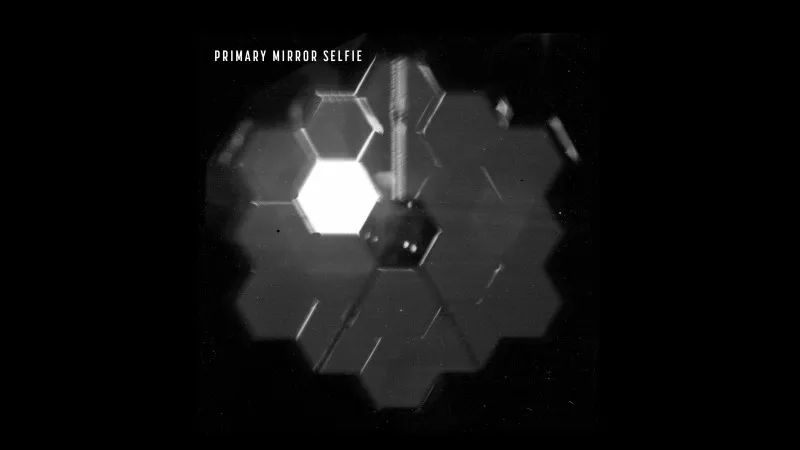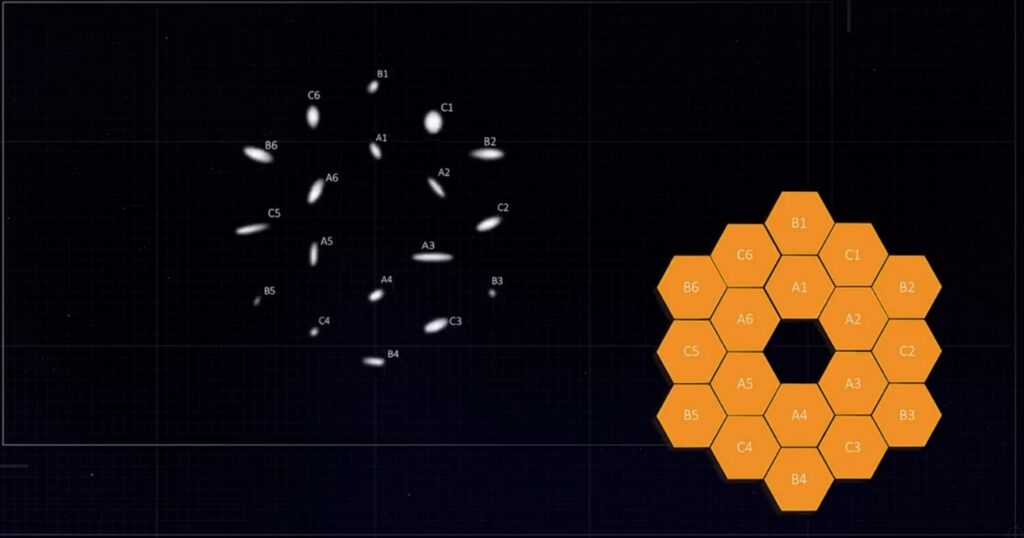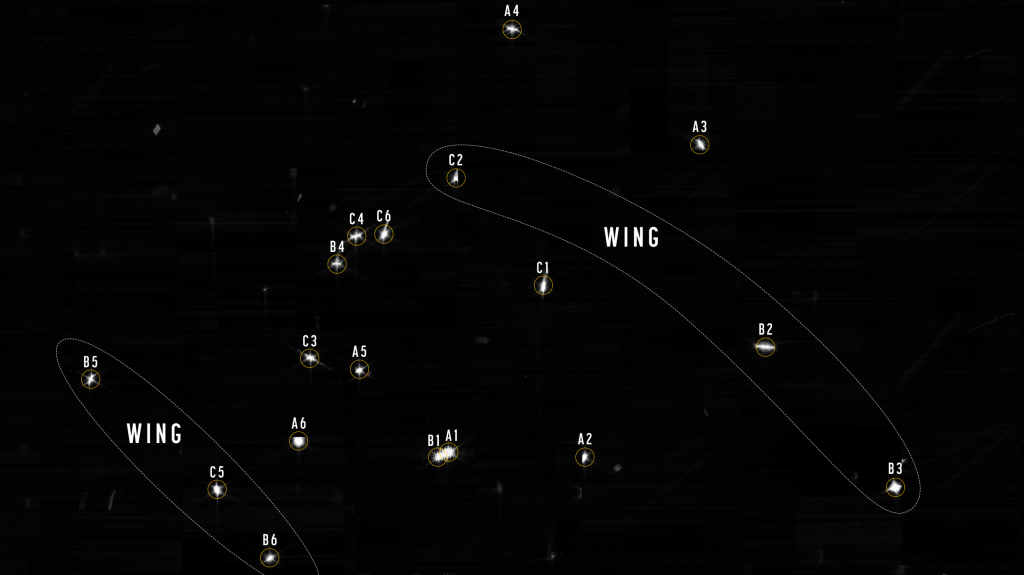First selfie of James Webb telescope – The Selfie of James Webb Telescope was captured using a specialized pupil imaging lens inside the NIRCam. This pupil imaging lens of the Near-Infrared camera is designed to take images of the primary mirror segments instead of space images. This configuration is not used during scientific operations and is only used for engineering and alignment purposes. So, the bright segment was pointed at a bright star HD 84406, while the others aren’t currently in the exact alignment. This image gave an early indication of the primary mirror alignment to the James Webb Telescope.

After watching the first image taken by Webb of star ‘HD84406’ – “It’s a wonderful moment,” said Marshall Perrin, a scientist at the Space Telescope Science Institute in Baltimore. This wonderful image was created by pointing the telescope at a bright, isolated star HD 84406 in the Ursa Major constellation. This star was selected specifically because it can be identifiable and not crowded by other stars of similar brightness, which helps to reduce background confusion.
How was the first image of HD 84406 Star captured?

NASA got the first evaluation image sent by Webb in the middle of the night. At midnight James Webb telescope team evaluated whether the camera was working well enough to process a picture with proper alignment or not. So, they picked a very bright star named HD 84406, and the primary mirror segments aren’t aligned, so they act like 18 separate telescopes, and they got 18 separate images, one for each mirror. Those images are a little blurry now because alignment and focusing are not done completely. They used NIR Cam to capture images in different parts of the sky, and then they looked for the 18 spots from the 18 different telescopes. Now they identified the 18 spots is which mirror at this point.

Now they created an array of 18 images of HD84406, and then they do global alignment, which is when each of those 18 spots will start to be aligned and focused. The last step before they take those 18 spots, they put them on top of each other to start forming a single star going through the 18 separate telescope mirrors.
Know more: James Webb Telescope can detect the existence of life on an alien planet